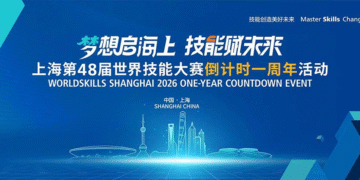Ultrasonic welding is a widely used process in various industries due to its speed, precision, and efficiency in joining thermoplastics. The custom ultrasonic welding machine has been a cornerstone in this development, offering tailored solutions for specific manufacturing requirements.
With advancements in material compatibility, energy efficiency, and artificial intelligence (AI) integration, the future of custom ultrasonic plastic welders is set to bring significant changes.
In this article, we will explore the key future trends in custom ultrasonic welding equipment and how these advancements will shape the industry.
1. Advancements in Material Compatibility
Ultrasonic welding has traditionally been most effective for thermoplastics, such as ABS, POM, PVC, and Polycarbonate.
However, the growing demand for complex, multi-material assemblies in industries such as automotive and electronics has highlighted the need for custom ultrasonic welding machine solutions capable of joining a wider variety of materials, including metals and composite materials.
One of the most exciting trends in custom ultrasonic welder equipment is the increasing ability to weld a broader range of materials. Today’s ultrasonic welding machines are largely designed to weld homogeneous plastics, but future machines will need to accommodate mixed-material assemblies.
For instance, welding together plastic parts with metal inserts or combining different types of thermoplastics within the same component will become more common. This will require custom ultrasonic welder machines to be more flexible and adaptable to the specific material properties of each component.
- Composite Materials: As industries like aerospace and automotive increasingly use composite materials for their lightweight and high-strength properties, custom ultrasonic welding equipment will need to evolve to handle these materials.
The welding process must be optimized to avoid delamination or warping of these composites, which are sensitive to heat.
- Metal and Plastic Joining: The integration of plastic components with metal parts is becoming more prevalent, especially in industries like automotive, where metal inserts need to be encapsulated in plastic housings.
Advances in ultrasonic welding technology will improve the process’s efficiency in bonding dissimilar materials, paving the way for custom ultrasonic plastic welders that can handle both metals and plastics simultaneously.
The next generation of custom ultrasonic welding machines will likely incorporate advanced sensors and adjustable settings that can be fine-tuned to accommodate the specific characteristics of various materials.
For example, advanced custom ultrasonic welding equipment may feature automatic settings that optimize energy output based on the material’s thickness, density, and melt temperature, resulting in better weld quality.
2. Energy Efficiency and Sustainability
Traditional ultrasonic welding is already a more energy-efficient option than other methods like hot plate or vibration welding, as it only generates heat at the weld interface. However, there is still room for improvement in energy consumption and waste reduction.
The future of custom ultrasonic welder equipment will likely see advancements in energy control systems. The integration of real-time energy monitoring, along with AI-based optimization, could help minimize power consumption during the welding process.
Such systems could dynamically adjust the amplitude and pressure during welding, based on the specific part geometry and material being processed, ensuring that energy is used as efficiently as possible.
One of the most exciting trends in ultrasonic welding is the possibility of reducing waste during the manufacturing process. Traditional plastic bonding methods often generate significant waste. Custom ultrasonic welding machine solutions, with their high precision and minimal material consumption, help reduce the amount of waste generated during production.
In the future, custom ultrasonic welding machines will likely incorporate closed-loop systems that recycle waste material back into the production process, further improving sustainability. This could include systems for reusing excess plastic during the welding process or repurposing scrap material from cutouts to reduce overall production waste.
3. Artificial Intelligence (AI) Integration in Ultrasonic Welding
One of the most transformative advancements in custom ultrasonic welding machines will be the integration of artificial intelligence (AI) for real-time process control.
AI can help optimize the welding process by analyzing variables such as material thickness, temperature fluctuations, and ultrasonic vibration frequency. By continuously adjusting these variables, AI can ensure consistent and high-quality welds, even under varying manufacturing conditions.
- Predictive Maintenance: AI will enable custom ultrasonic welding equipment to predict when maintenance or repairs are needed based on real-time data. Sensors in the welding system can track vibrations, temperature, and pressure, and AI algorithms will analyze this data to predict when parts may fail, reducing downtime and maintenance costs.
- Adaptive Welding Parameters: AI can also automatically adjust the welding parameters to ensure optimal results. For example, if the machine detects a variation in material properties or a slight change in part alignment, AI can adjust the frequency or amplitude of the ultrasonic vibrations to correct for these discrepancies in real time.
AI integration in custom ultrasonic plastic welders will also enhance quality control. Advanced machine learning algorithms can automatically inspect weld quality by analyzing real-time data such as vibration patterns, weld strength, and even visual cues like the appearance of the joint.
This level of automated inspection will allow for higher throughput and greater precision, reducing the need for manual quality control checks.
For industries like electronics, where quality standards are extremely high, custom ultrasonic welding machines equipped with AI-driven inspection systems will be able to ensure that each weld is of consistent quality, preventing defective products from reaching the market.
4. Automation and Integration with Industry 4.0
As part of the broader trend toward Industry 4.0, the development of custom ultrasonic welding machine solutions will increasingly involve full integration with automated manufacturing systems.
Future ultrasonic welding machines will not only work in standalone configurations but will also seamlessly integrate with robotic arms, conveyors, and other automated systems, enabling fully automated production lines.
- Smart Factories: With the use of advanced sensors, real-time data analytics, and AI, custom ultrasonic welding equipment will be able to operate autonomously within smart factories. These machines will communicate with other production equipment, exchanging data to optimize the entire production process.
- Remote Monitoring and Control: Remote monitoring and control will become standard features for custom ultrasonic welder machines. Operators and supervisors will be able to track machine performance in real time, make adjustments remotely, and even troubleshoot issues without being physically present on the shop floor.
Collaborative Robots (Cobots)
The use of collaborative robots, or cobots, will likely play a significant role in future ultrasonic welding systems. These robots are designed to work alongside human operators in a shared workspace.
In the context of custom ultrasonic plastic welders, cobots could assist in loading and unloading parts, handling complex or delicate items, or even making adjustments to the welding process in real time.
Cobots will help improve efficiency and safety by taking over repetitive or hazardous tasks while leaving the more intricate or decision-making processes to human operators. The integration of custom ultrasonic welder equipment with cobots will make the manufacturing process more flexible and adaptable to varying production needs.
5. Miniaturization and Portability
Another trend we expect to see in the future of custom ultrasonic welding machines is the miniaturization of the systems. As manufacturers continue to demand smaller, more efficient machines that can be easily incorporated into tight spaces, we will likely see the development of more compact ultrasonic welders without sacrificing performance.
- Handheld Ultrasonic Welders: For smaller production runs or for situations where parts need to be welded on the move, Dizo plastic welding machine solutions may become increasingly popular. These portable machines offer flexibility while still delivering the power and precision of larger systems.
- Integration into Desktop or Portable Solutions: In certain industries, the ability to perform ultrasonic welding in tight or remote environments will be crucial.
The development of custom ultrasonic plastic welders that are lightweight, portable, and capable of handling multiple materials will open new opportunities in fields like medical device manufacturing or small-scale electronics production.
Conclusion
The future of custom ultrasonic welding machines is bright, with advancements in material compatibility, energy efficiency, AI integration, and automation driving the industry forward. As manufacturers face increasing demands for precision, sustainability, and speed, the evolution of custom ultrasonic welding equipment will play a crucial role in meeting these needs.
From AI-driven process control to the integration of custom ultrasonic welder equipment into automated production lines, the next generation of welding machines will be smarter, faster, and more efficient.
Whether it’s the development of machines that can handle a wider range of materials or the adoption of miniaturized, portable systems, the future of ultrasonic welding holds tremendous potential for innovation and growth.













